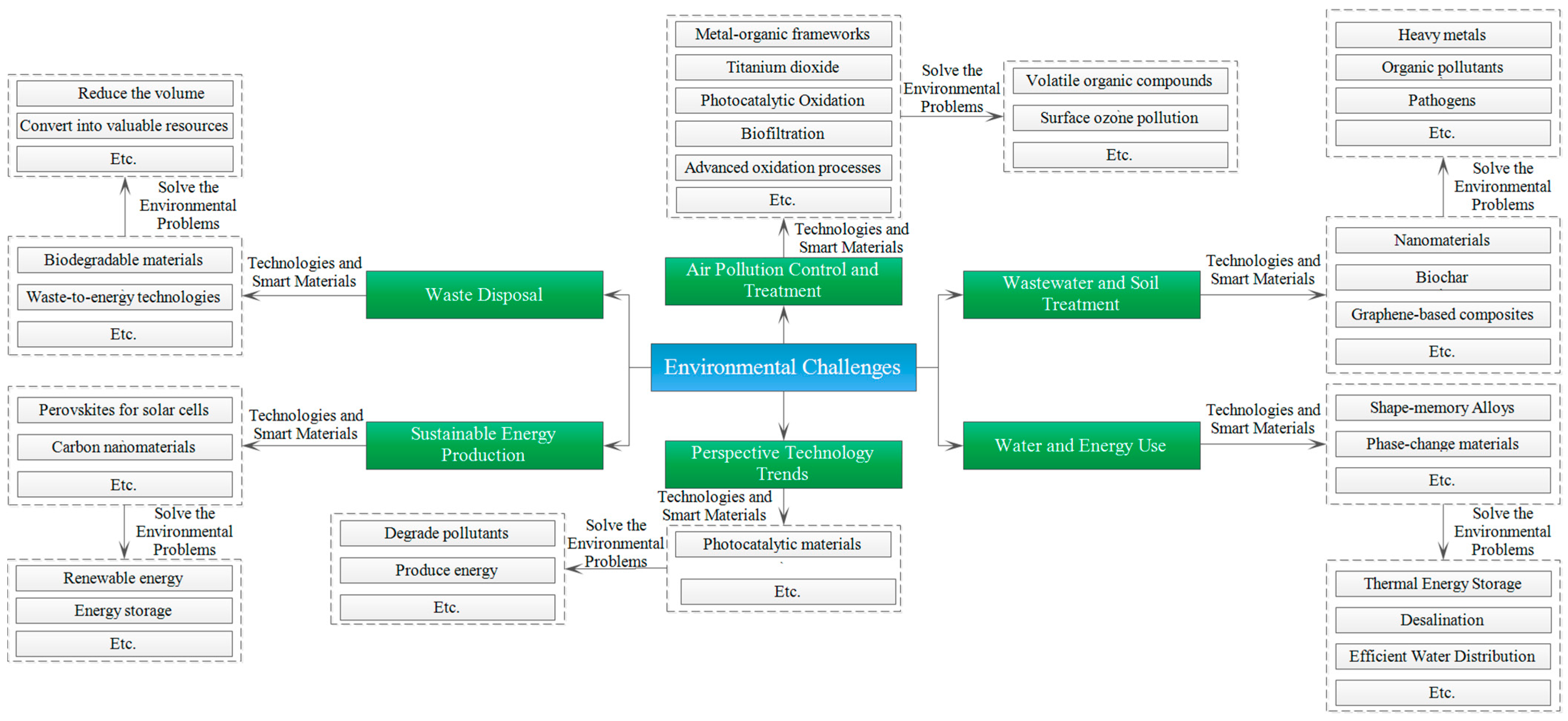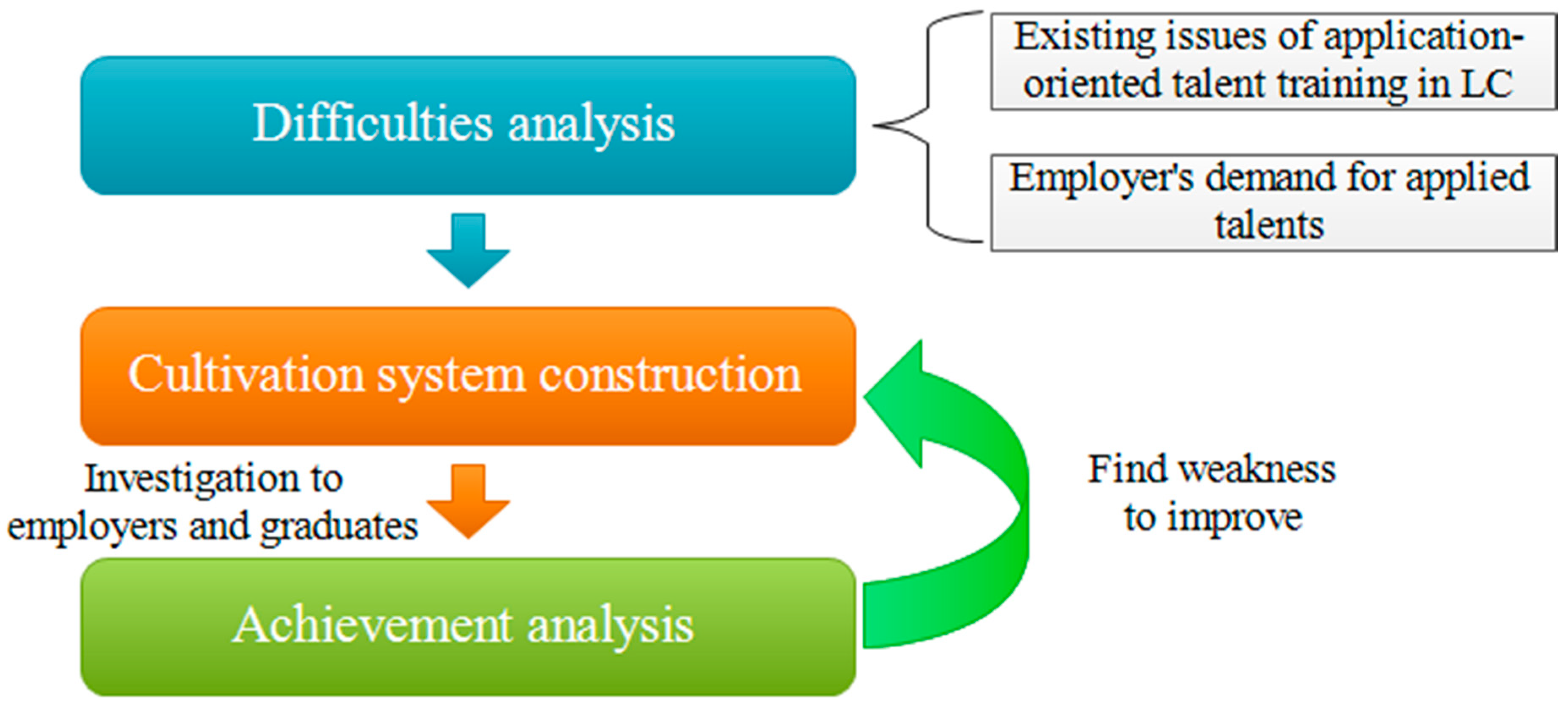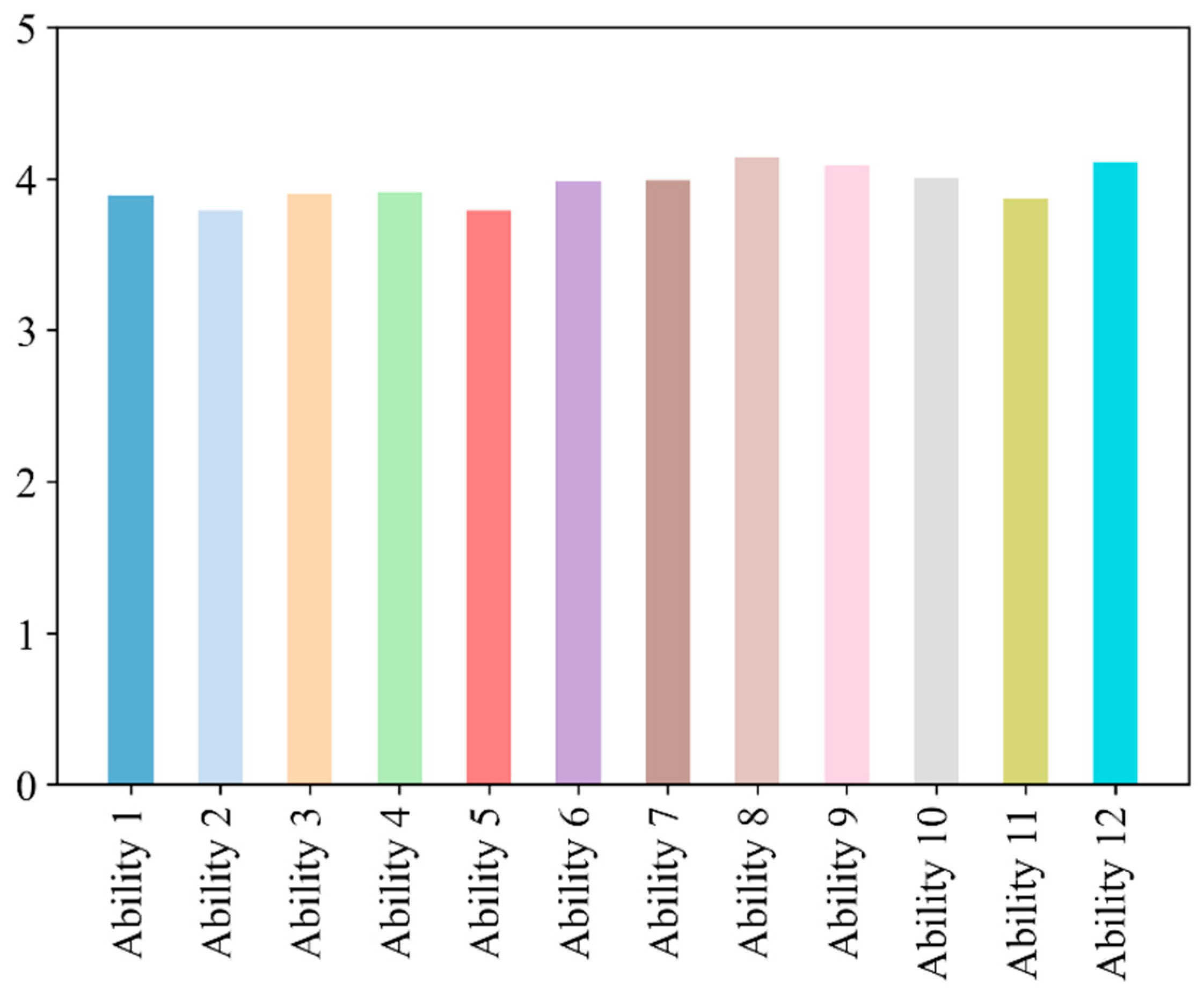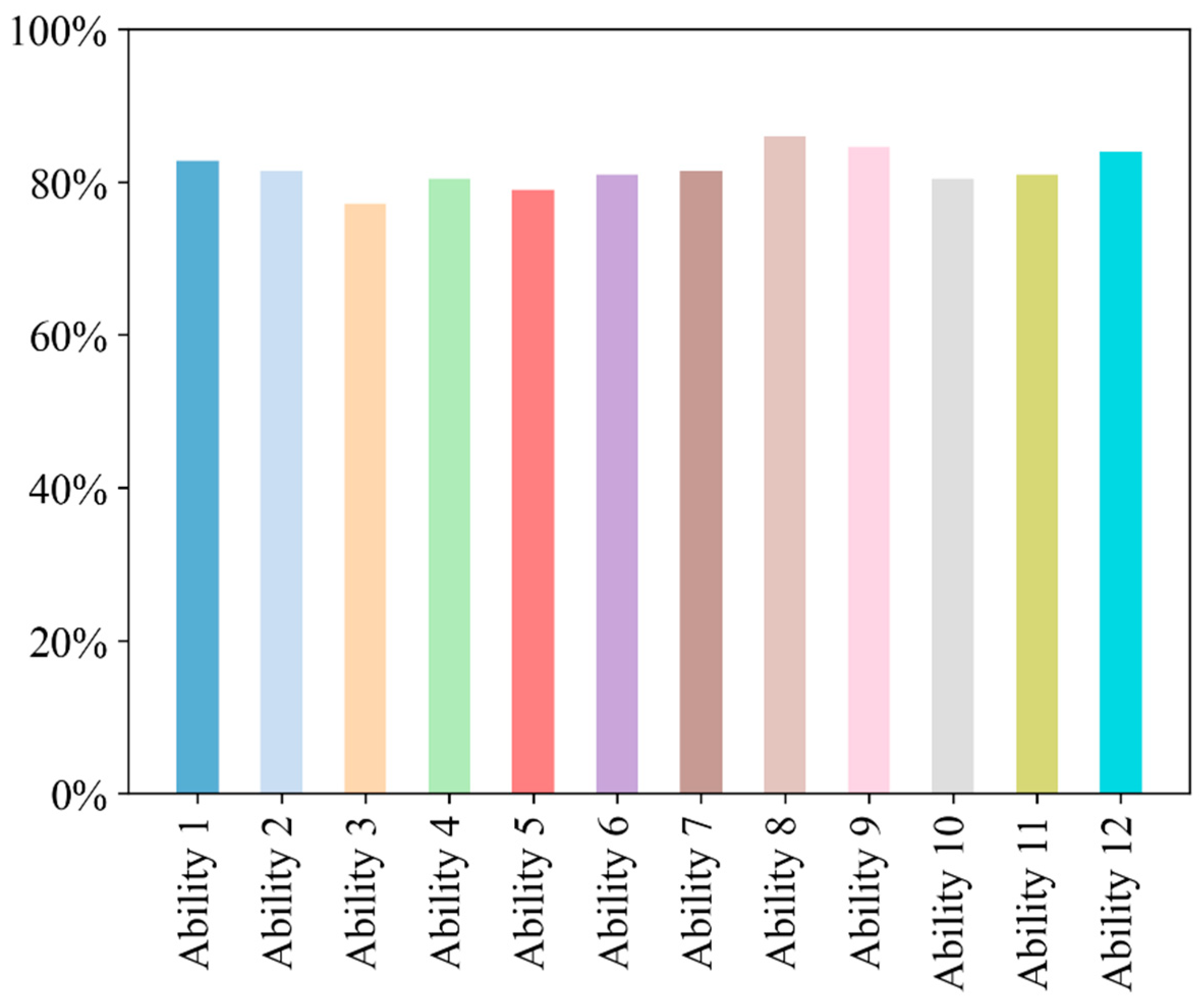Educational Approaches for Integrating Advanced Environmental Remediation Technologies into Environmental Engineering: The ‘Four Styles’ Model
Abstract
:1. Introduction
1.1. Background
1.2. Literature Review for the Applied Talents Training in EEM
1.3. The Need for Integration of Emerging Environmental Technologies and Educational Strategies
1.4. Main Contents of This Study
1.5. Necessary and Contribution of Our Study
2. Materials and Methods
2.1. Institutional Characteristics and Talent Development Focus of HBPU
2.2. Methodology for Cultivation System Construction
2.3. Methodology of Investigation
2.4. Data Analysis
3. Results
3.1. Deficiency in the Cultivation of Applied Talents in EEMs in LCs
3.2. Absence of Specific Talent Training Objectives
3.3. Incomplete Curriculum System
3.4. Inconsistent Practical Teaching Platform
3.5. Homogeneous Teaching Team
4. Discussion
4.1. The ‘Four Styles’ Cultivation System in EEM
4.1.1. ‘Four Styles’ Application Talent Training Objectives
4.1.2. The ‘1 + Multiple’ Curriculum System
4.1.3. The ‘Cloud + Field’ Practical Platforms
4.1.4. The ‘1 + 2’ Teaching Team
4.2. Outcomes of the ‘Four Styles’ Cultivation System in EEM at HBPU
5. Conclusions
Supplementary Materials
Author Contributions
Funding
Data Availability Statement
Acknowledgments
Conflicts of Interest
References
- Karabulut-Ilgu, A.; Cherrez, N.J.; Jahren, C.T. A systematic review of research on the flipped learning method in engineering education. Br. J. Educ. Technol. 2018, 49, 398–411. [Google Scholar] [CrossRef]
- Smith, D.W.; Biswas, N. Environmental engineering education in Canada. Can. J. Civ. Eng. 2001, 28, 1–7. [Google Scholar] [CrossRef]
- Haque, M.S.; Sharif, S. The need for an effective environmental engineering education to meet the growing environmental pollution in Bangladesh. Cleaner Eng. Technol. 2021, 4, 19. [Google Scholar] [CrossRef]
- Shao, Y.M.; Chen, Z.F. Can government subsidies promote the green technology innovation transformation? Evidence from Chinese listed companies. Econ. Anal. Policy 2022, 74, 716–727. [Google Scholar] [CrossRef]
- Song, M.L.; Peng, J.; Wang, J.L.; Zhao, J.J. Environmental efficiency and economic growth of China: A Ray slack-based model analysis. Eur. J. Oper. Res. 2018, 269, 51–63. [Google Scholar] [CrossRef]
- Xu, X.H.; Zhong, J.X.; Zhang, L.H.; Shi, Y.F. In A preliminary study on the teaching reform of practice of environmental engineering for the cultivation of applied talents. In Proceedings of the 7th International Conference on Mechatronics, Computer and Education Informationization (MCEI), Shenyang, China, 3–5 November 2017; Atlantis Press: Shenyang, China, 2017; pp. 350–354. [Google Scholar]
- Xiao, N.B.; Gao, R.L. Talent Cultivation Mode of “Hotel-Colleges and Universities Joint Training System”. Educ. Sci.-Theory Pract. 2018, 18, 1016–1024. [Google Scholar]
- Sun, C. In Reflection on the connotation of innovative education in colleges and universities and cultivation of innovative talents. In Proceedings of the 5th International Conference on Management, Computer and Education Informatization (MCEI), Shenyang, China, 25–27 September 2015; Atlantis Press: Shenyang, China, 2015; pp. 370–373. [Google Scholar]
- Binder, E.; Wang, H.; Zhang, J.L.; Schlappal, T.; Yuan, Y.; Mang, H.A.; Pichler, B.L.A. Application-oriented fundamental research on concrete and reinforced concrete structures: Selected findings from an Austro-Chinese research project. Acta Mech. 2020, 231, 2231–2255. [Google Scholar] [CrossRef]
- Vats, G.; Sharma, M.; Vaish, R.; Chauhan, V.S.; Madhar, N.A.; Shahabuddin, M.; Parakkandy, J.M.; Batoo, K.M. Application oriented selection of optimal sintering temperature from user perspective: A study on K0.5Na0.5NbO3 ceramics. Ferroelectrics 2015, 481, 64–76. [Google Scholar] [CrossRef]
- Jones, R.W. Problem-based learning: Description, advantages, disadvantages, scenarios and facilitation. Anaesth. Intensive Care 2006, 34, 485–488. [Google Scholar] [CrossRef]
- Prince, M.J.; Felder, R.M. Inductive teaching and learning methods: Definitions, comparisons, and research bases. J. Eng. Educ. 2006, 95, 123–138. [Google Scholar] [CrossRef]
- Tretinjak, M.F.; Bednjanec, A.; Tretinjak, M. Application of modern teaching techniques in the educational process. In Proceedings of the 37th International Convention on Information and Communication Technology, Electronics and Microelectronics (MIPRO), Opatija, Croatia, 25–29 May 2014; IEEE: Opatija, Croatia, 2014; pp. 628–632. [Google Scholar]
- Aboytes, J.G.R.; Barth, M. Transformative learning in the field of sustainability: A systematic literature review (1999–2019). Int. J. Sustain. High. Educ. 2020, 21, 993–1013. [Google Scholar] [CrossRef]
- Lyon, J.A.; Magana, A.J. The use of engineering model-building activities to elicit computational thinking: A design-based research study. J. Eng. Educ. 2021, 110, 184–206. [Google Scholar] [CrossRef]
- Johri, A.; Olds, B. Situated engineering learning: Bridging engineering education research and the learning sciences. J. Eng. Educ. 2011, 100, 151–185. [Google Scholar] [CrossRef]
- Chan, C.K.Y.; Zhao, Y.; Luk, L.Y.Y. A validated and reliable instrument investigating engineering students’ perceptions of competency in generic skills. J. Eng. Educ. 2017, 106, 299–325. [Google Scholar] [CrossRef]
- Bartram, J.; Setty, K. Environmental health science and engineering for policy, programming, and practice. J. Environ. Eng. 2021, 147, 03121002. [Google Scholar] [CrossRef]
- Walther, J.; Kellam, N.; Sochacka, N.; Radcliffe, D. Engineering competence? An interpretive investigation of engineering students’ professional formation. J. Eng. Educ. 2011, 100, 703–740. [Google Scholar] [CrossRef]
- Borrego, M.; Karlin, J.; McNair, L.D.; Beddoes, K. Team effectiveness theory from industrial and organizational psychology applied to engineering student project teams: A research review. J. Eng. Educ. 2013, 102, 472–512. [Google Scholar] [CrossRef]
- Grisolia, A.; Dell’Olio, G.; Spadafora, A.; De Santo, M.; Morelli, C.; Leggio, A.; Pasqua, L. Hybrid polymer-silica nanostructured materials for environmental remediation. Molecules 2023, 28, 5105. [Google Scholar] [CrossRef] [PubMed]
- Wang, J.; Ding, X.T.; Zhou, X.Q.; Liao, Z.W.; Cai, J.Y.; Wang, S.Q.; Jawad, A.; Ifthikar, J.; Yang, L.; Wang, S.L.; et al. A versatile Fe2+/urea hydrogen peroxide advanced oxidation process for not only organoarsenic remediation but also nitrogen supplement in soil. J. Environ. Chem. Eng. 2023, 11, 13. [Google Scholar] [CrossRef]
- Wang, J.; Liao, Z.W.; Cai, J.Y.; Wang, S.Q.; Luo, F.; Ifthikar, J.; Wang, S.L.; Zhou, X.Q.; Chen, Z.Q. Treatment of coking wastewater by α-MnO2/peroxymonosulfate process via direct electron transfer mechanism. Catalysts 2022, 12, 1359. [Google Scholar] [CrossRef]
- Almaie, S.; Vatanpour, V.; Rasoulifard, M.H.; Koyuncu, I. Volatile organic compounds (VOCs) removal by photocatalysts: A review. Chemosphere 2022, 306, 14. [Google Scholar] [CrossRef]
- Wang, J.; Gong, Q.; Ali, J.; Shen, M.; Cai, J.Y.; Zhou, X.Q.; Liao, Z.W.; Wang, S.L.; Chen, Z.Q. pH-dependent transformation products and residual toxicity evaluation of sulfamethoxazole degradation through non-radical oxygen species involved process. Chem. Eng. J. 2020, 390, 13. [Google Scholar] [CrossRef]
- Verma, S.K.; Sharma, P.C. Current trends in solid tannery waste management. Crit. Rev. Biotechnol. 2023, 43, 805–822. [Google Scholar] [CrossRef]
- Wang, J.; Cai, J.Y.; Wang, S.Q.; Zhou, X.Q.; Ding, X.T.; Ali, J.; Zheng, L.; Wang, S.L.; Yang, L.; Xi, S.; et al. Biochar-based activation of peroxide: Multivariate-controlled performance, modulatory surface reactive sites and tunable oxidative species. Chem. Eng. J. 2022, 428, 29. [Google Scholar] [CrossRef]
- Huang, Y.L.; Wang, J.; Li, M.W.; You, Z.X. Application of dithiocarbamate chitosan modified SBA-15 for catalytic reductive removal of vanadium(V). Catalysts 2022, 12, 1469. [Google Scholar] [CrossRef]
- Hariri, N.G.; Nayel, K.M.; Alyoubi, E.K.; Almadani, I.K.; Osman, I.S.; Al-Qahtani, B.A. Thermal-optical evaluation of an optimized trough solar concentrator for an advanced solar-tracking application using shape memory alloy. Materials 2022, 15, 7110. [Google Scholar] [CrossRef]
- Zhu, C.Y.; Ye, Y.W.; Guo, X.; Cheng, F. Design and synthesis of carbon-based nanomaterials for electrochemical energy storage. New Carbon Mater. 2022, 37, 59–86. [Google Scholar] [CrossRef]
- Rana, S.; Kumar, A.; Dhiman, P.; Sharma, G.; Amirian, J.; Stadler, F.J. Progress in graphdiyne and phosphorene based composites and heterostructures as new age materials for photocatalytic hydrogen evolution. Fuel 2024, 356, 25. [Google Scholar] [CrossRef]
- Luo, Y.; Qin, S.B.; Wang, D.S. Reform of embedded system experiment course based on engineering education accreditation. Int. J. Elec. Eng. Educ. 2020, 14, 0020720920918155. [Google Scholar] [CrossRef]
- Zhu, Q.; Jesiek, B.K.; Yuan, J. Engineering Education Policymaking in Cross-National Context: A Critical Analysis of Engineering Education Accreditation in China. In Proceedings of the 2014 ASEE Annual Conference & Exposition, Indianapolis, IN, USA, 15–18 June 2014; American Society for Engineering Education: Indianapolis, IN, USA, 2014. [Google Scholar]
- Zhao, X.; Xu, H.; Li, D.M.; Luo, H.T.; Zhou, Z.F. In The analysis to the training method of the current college students’ Iinnovative consciousness and innovative ability-treating environmental engineering students as an example. In Proceedings of the International Conference on Energy and Power Engineering (EPE), Hong Kong, China, 26–27 April 2014; Destech Publications, Inc: Hong Kong, China, 2014; pp. 464–468. [Google Scholar]
- Zhang, J.X.; Li, R.; Li, H.; Skitmore, M.; Ballesteros-Pérezeand, P. Improving the innovation ability of engineering students: A science and technology innovation community organisation network analysis. Stud. High. Educ. 2021, 46, 851–865. [Google Scholar] [CrossRef]
- Wu, J.H. Education model of guiding college students to find employment in environmental company. J. Environ. Prot. Ecol. 2021, 22, 2634–2642. [Google Scholar]
- Chen, Q.L.; Wang, T.C. Government support, talent, coupling of innovation chain and capital chain: Empirical analysis in integrated circuit enterprises. Chin. Manag. Stud. 2023, 17, 883–905. [Google Scholar] [CrossRef]
- Ishiyama, N. The impact of the talent management mechanism and self-perceived talent status on work engagement: The case of Japan. Asia Pac. Bus. Rev. 2022, 28, 536–554. [Google Scholar] [CrossRef]
- Tian, D.Y.; Wang, T.; Su, W.H.; Yang, S.; Zheng, Y.; Zhao, M.L.; Cheng, S.S.; Niu, Y.S.; Liu, X.T. Analysis of three gaps in the teaching system of environmental impact assessment (EIA) and the improvement based on application-oriented talent training. In Proceedings of the 6th International Conference on Energy, Environment and Materials Science (EEMS), Hulun Buir, China, 28–30 August 2020; Iop Publishing Ltd.: Hulun Buir, China, 2020. [Google Scholar]
- Rassameethes, B.; Phusavat, K.; Pastuszak, Z.; Hidayanto, A.N.; Majava, J. From training to learning: Transition of a workplace for industry 4.0. Hum. Syst. Manag. 2021, 40, 777–787. [Google Scholar] [CrossRef]
- Esmaeili, B.; Parker, P.J.; Hart, S.D.; Mayer, B.K.; Klosky, L.; Penn, M.R. Inclusion of an introduction to infrastructure course in a civil and environmental engineering curriculum. J. Prof. Issues Eng. Educ. Pract. 2017, 143, 8. [Google Scholar] [CrossRef]
- Ma, L.; Dong, Y.L.; Zhang, Y.F.; Xie, Y.D. In Research on professional talent training mode on data science and big data technology in local application-oriented universities. In Proceedings of the International Conference on Big Data Engineering and Education (BDEE), Guiyang, China, 12–14 August 2021; IEEE: Guiyang, China, 2021; pp. 56–59. [Google Scholar]
- Kim, S.; Kim, W.; Kim, H. In Learning path construction using reinforcement learning and Bloom’s Taxonomy. In Proceedings of the 17th International Conference on Intelligent Tutoring Systems (ITS), Virtual Event, 7–11 June 2021; Springer International Publishing Ag: Cham, Switzerland, 2021; pp. 267–278. [Google Scholar]
- Jahan, K.; Farrell, S.; Hartman, H.; Forin, T. Integrating inclusivity and sustainability in civil engineering courses. Int. J. Eng. Educ. 2022, 38, 727–741. [Google Scholar]
- Zhou, M.X.; Yin, Z.; Chen, H.Y. In Research and exploration on the “Three-stage and two-type” practical talent training system for electronic information major. In Proceedings of the 11th International Conference on Educational and Information Technology (ICEIT), Chengdu, China, 6–8 January 2022; Sichuan Normal University: Chengdu, China, 2022; pp. 180–184. [Google Scholar]
- Sattler, M. Transportation and air quality/environment: A suggested course addition to the environmental engineering/science curriculum. Environ. Eng. Sci. 2006, 23, 479–492. [Google Scholar] [CrossRef]
- Wang, X.; Yan, Z.Y.; Wang, S.; Wang, L.L. Training model of practical innovative talents in polytechnic colleges based on fuzzy set and its extended modeling. Learn. Motiv. 2023, 84, 12. [Google Scholar]
- Zhao, L.; Ao, Y.B.; Wang, Y.; Wang, T. Impact of home-based learning experience during COVID-19 on future intentions to study online: A Chinese university perspective. Front. Psychol. 2022, 13, 14. [Google Scholar]
- Liang, P.; Fu, Y.P.; Gao, K.Z.; Sun, H. An enhanced group teaching optimization algorithm for multi-product disassembly line balancing problems. Complex Intell. Syst. 2022, 8, 4497–4512. [Google Scholar] [CrossRef]
- Xue, H.B. A new integrated teaching mode for labor education course based on STEAM education. Int. J. Emerg. Technol. Learn. 2022, 17, 128–142. [Google Scholar] [CrossRef]
- Agarwal, S.M. Go-brown, go-green and smart initiatives implemented by the University of Delhi for environmental sustainability towards futuristic smart universities: Observational study. Heliyon 2023, 9, 18. [Google Scholar] [CrossRef] [PubMed]






Disclaimer/Publisher’s Note: The statements, opinions and data contained in all publications are solely those of the individual author(s) and contributor(s) and not of MDPI and/or the editor(s). MDPI and/or the editor(s) disclaim responsibility for any injury to people or property resulting from any ideas, methods, instructions or products referred to in the content. |
© 2024 by the authors. Licensee MDPI, Basel, Switzerland. This article is an open access article distributed under the terms and conditions of the Creative Commons Attribution (CC BY) license (https://creativecommons.org/licenses/by/4.0/).
Share and Cite
Liu, S.; Zhang, J.; Tao, M.; Tang, P.; Zhan, C.; Guo, J.; Li, Y.; Liu, X. Educational Approaches for Integrating Advanced Environmental Remediation Technologies into Environmental Engineering: The ‘Four Styles’ Model. Processes 2024, 12, 1569. https://doi.org/10.3390/pr12081569
Liu S, Zhang J, Tao M, Tang P, Zhan C, Guo J, Li Y, Liu X. Educational Approaches for Integrating Advanced Environmental Remediation Technologies into Environmental Engineering: The ‘Four Styles’ Model. Processes. 2024; 12(8):1569. https://doi.org/10.3390/pr12081569
Chicago/Turabian StyleLiu, Shan, Jiaquan Zhang, Min Tao, Ping Tang, Changlin Zhan, Jianlin Guo, Yanni Li, and Xianli Liu. 2024. "Educational Approaches for Integrating Advanced Environmental Remediation Technologies into Environmental Engineering: The ‘Four Styles’ Model" Processes 12, no. 8: 1569. https://doi.org/10.3390/pr12081569






